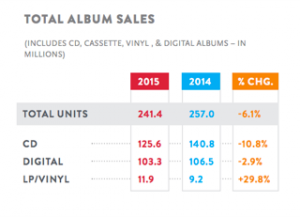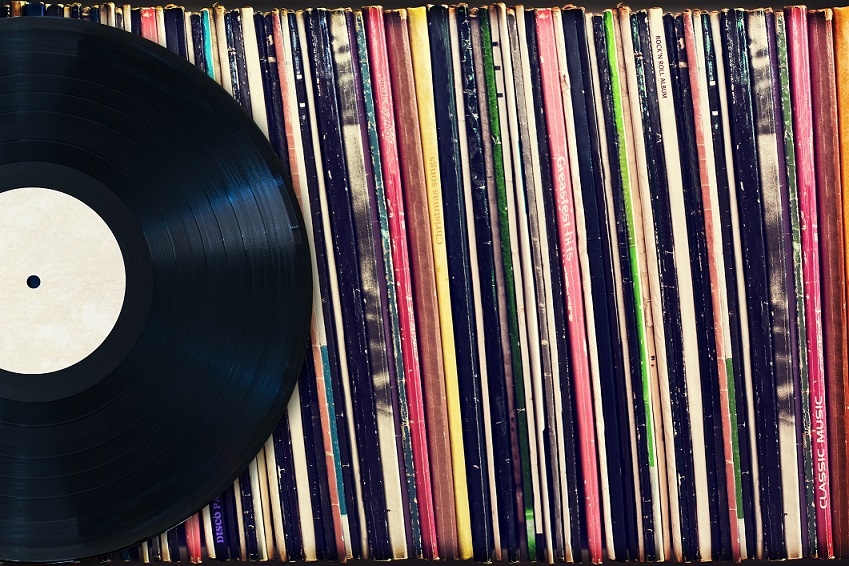The Return of the Tactile Experience: What It Means for Tech Companies
Jan 05, 2017 / By Content Editor
Each decade, it seems, has spelled the end of an era for old or “redundant” technologies. For those who remember the 8-track, we lamented its loss when cassettes came on the scene (I’m aging myself now). Several decades later, cassettes and vinyl records found themselves on the way out with the arrival of DVDs, CDs and mp3 players. For traditionalists, the end was nigh: vinyl records - nil, streaming music services - 10 points.
Since the early naughts, the masses didn't pay attention to vinyl. And why should they? What an outdated and un-technological way to listen to music.
Or so it seemed.
Touch Me, Touch Me, I Want to Feel, Er, Your, Plastic Record Grooves
Vinyl has entered a new era of popularity. In 2015, vinyl record sales rose 32% to $416 million - the highest level reported since 1988. In fact, revenues from vinyl album sales rose faster than those of on-demand, ad-supported streaming services, such as YouTube. In the UK, The Guardian reports that vinyl sales recently overtook digital downloads for the first time.
It’s hard to believe,
No, we’re not Luddites. But a profound pattern reflects consumer interest in media that provide a tactile, physical experience. Vinyl is one example. Growth is also returning to the bookstore business that once was seen as an inevitable victim of the eReader and smartphone. Books now see the Internet - a former threat -- as a growth engine. (It also helps to have a decent coffee shop on the premises.)
Though the vinyl turnaround is instructive, it needs to be seen in context.
 Music sales in 2015: Nielsen
Music sales in 2015: Nielsen
Despite robust growth, vinyl album sales in first half 2016 were only about 6% of the $3.4 billion in revenue for the U.S. recording music industry. Digital downloads for singles and albums exceeded $1 billion, with streaming responsible for nearly half. (The U.K. vinyl surge falls more into this pattern when streaming is included.) In terms of total 2015 album sales, the Nielsen U.S. Music Report found that vinyl sold only 11.9 million out of more than 240 million albums in the U.S.
A meaning of Touch? “To treat or affect in some way by contact”
The print book business is a different matter. In a 2016 study, the Pew Research Center found that 65% of Americans have read a print book in the last year, more than double the share of e-books. So unlike vinyl, which has modest market share, print books appear to have stabilized as a strong reader preference. Magazine readership is slipping but print still holds significant market share. It's a different story with newspapers, which continue to lose hard copy circulation and ad revenues in many markets, but we’ll save that for a later post.
It's also interesting to consider the demographics of this "tactile" market.
If you think vinyl records are favored by old fogies who grew up at '60s rock concerts featuring The Kinks or The Mamas & the Papas, think again. Vinyl is most popular among Millennials. Nearly 50% of vinyl buyers are under 35 years old. Mind you, this is a consumer segment raised on the Internet and technology - and now wanting the tactile experience.
In contrast, print book and magazine readers tend to be older, more affluent and higher up the decision-making chain at many companies. These buyers are not gnorant about the internet, but the web is clearly not their only source of information and entertainment.
The Tactile Takeaway
For brands whose sole focus has been online and virtual with no physical experience needed, what does this reverse shift tell us?
For the marketing professional, the revival of vinyl and printed books doesn’t mean that digital marketing faces a threat - or even that it faces serious limitations. But the enduring need for a tactile experience does suggest that marketers cannot afford to overlook the niche audiences today that may become the mass audiences of tomorrow.
The trend also reminds us that business models must always evolve to meet consumer needs, even if that might mean looking backwards.
Sometimes, as I wrote in a recent post about Amazon, embracing change may mean "reprogramming" consumer behaviors. And it might just mean that marketers must do a better job of listening to their customers, or keeping an element of human touch in products and business transactions.
Sign up for our insights on the convergence of business and PR

